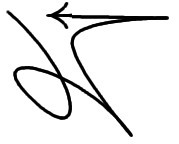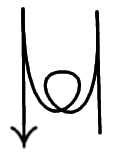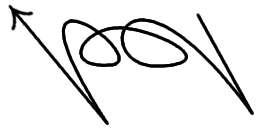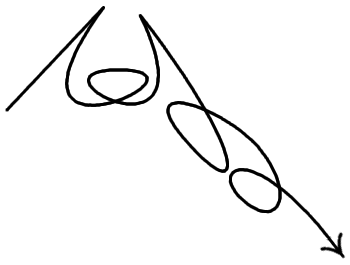Spell Casting Guide
License
Copyright (c) 2006 Nathan (Acorn) Pooley
Permission is granted to copy, distribute and/or modify this document
under the terms of the GNU Free Documentation License, Version 1.2;
with no Invariant Sections, no Front-Cover Texts, and no Back-Cover Texts.
A copy of the license is included in the file fdl.txt and is also
available
from http://www.gnu.org/licenses/fdl.html
Introduction to Wand Spells
Some of the most powerful spells are cast using wand motions. Spoken
spells can also be very powerful. In reality they are two forms of the
same kind of magic. When combined together their power is multiplied. Some
of the most powerful magic known is created with the combination of
utterance and wand motion.
To become proficient in wand usage you must learn the connection between
the mwaneme (wand) spell and the phoneme (uttered) spell.
Mwanemes
All spoken words are made up of sounds known as phonemes. Similarly all
wand spells are made up of motions known as mwanemes. The following chart
shows the connections
| Type of Mwaneme |
Mwaneme |
Phoneme Sound |
Type of Phoneme |
| clockwise circle (1+) |
 |
 (fat) (fat) | vowel |
 (far) (far) | vowel |
 (rock) (rock) | vowel |
 (mouth) (mouth) | dipthong |
 (stay) (stay) | dipthong |
 (try) (try) | dipthong |
| clockwise circles (2+) |
 |
 (sort) (sort) | vowel |
 (put) (put) | vowel |
 (boot) (boot) | vowel |
 (her) (her) | vowel |
 (sure) (sure) | dipthong |
 (nose) (nose) | dipthong |
 (toy) (toy) | dipthong |
| clockwise circles (3+) |
 |
 (up) (up) | vowel |
 (until) (until) | vowel |
| counter clockwise circle (1+) |
 |
 (bed) (bed) | vowel |
 (there) (there) | dipthong |
| counter clockwise circles (2+) |
 |
 (three) (three) | vowel |
 (fear) (fear) | dipthong |
| counter clockwise circles (3+) |
 |
 (bin) (bin) | vowel |
|
| Type of Mwaneme |
Mwaneme |
Phoneme Sound |
Type of Phoneme |
| vertical flick up |
 |
 (dust) (dust) | consonant |
 (bat) (bat) | consonant |
 (pot) (pot) | consonant |
 (tap) (tap) | consonant |
| horizontal flick right |
 |
 (king) (king) | consonant |
| vertical flick down |
 |
 (god) (god) | consonant |
 (joy) (joy) | consonant |
 (yellow) (yellow) | consonant |
| horizontal flick left |
 |
 (fat) (fat) | consonant |
 (vine) (vine) | consonant |
| diagonal flick up-right |
 |
 (hat) (hat) | consonant |
 (this) (this) | consonant |
 (thick) (thick) | consonant |
| diagonal flick down-right |
 |
 (sit) (sit) | consonant |
 (zap) (zap) | consonant |
 (ship) (ship) | consonant |
 (chip) (chip) | consonant |
 (television) (television) | consonant |
| diagonal flick down-left |
 |
 (mud) (mud) | consonant |
 (newt) (newt) | consonant |
 (king) (king) | consonant |
| diagonal flick up-left |
 |
 (loud) (loud) | consonant |
 (rock) (rock) | consonant |
 (wet) (wet) | consonant |
|
Combining Mwanemes
Just as it is important to smoothly combine different phoneme sounds into a
word, it is important to blend the mwaneme motions together smoothly into a
wand motion.
When a circular mwaneme follows a flick mwaneme it is important to make
your wand flow smoothly from the flick into the cicle(s). For example with
the
"GAY" spell notice how the  flick flows into the
flick flows into the  circle.
circle.
Also notice that the direction that the wand is moving at the end of the
spell is determined by the direction of the preceding flick. This is true
for any spell which ends with a circular mwaneme; the wand motion following
the last circle is determined by the preceding flick mwaneme.
When a flick mwaneme follows a circular mwaneme the flick determines the
starting direction of the motion of the circle. For example in the "ASK"
spell notice how the  flick determines the
starting direction of the
flick determines the
starting direction of the  circle.
circle.
Also note that when two flicks follow each other, as in the
 and
and  of the "ASK" spell,
that the first flick smoothly moves into the second flick.
of the "ASK" spell,
that the first flick smoothly moves into the second flick.
When a circular mwaneme is both preceded and followed by a flick then
the flicks and circles smoothly flow into each other, as in the "DAD"
spell.
Notice that in the "DAD" spell the circular mwaneme is more than a
complete circle; it is actually one and a half circles. This is common.
A circular mwaneme between two flick mwanemes contains at least one,
two, or three circles. For example the  and
and  mwanemes are always represened by at least one (but
less than two) full circles, the
mwanemes are always represened by at least one (but
less than two) full circles, the  mwaneme by at
lease two (but less than three) full circles, and the
mwaneme by at
lease two (but less than three) full circles, and the  mwaneme by at least three (but less than four) full
circles. This is also illustrated by the "CHEESE" spell
mwaneme by at least three (but less than four) full
circles. This is also illustrated by the "CHEESE" spell
The "CHEESE" spell, which contains 3 phonemes (and therfore 3 mwanemes), also
demonstrates that the wand motion is dependant on the utterance and not on
the spelling. Wizards from different locales sometimes use different spellings
for spell words, but the motion and pronunciation of the spell remains the
same.
Remember to speak the spell out loud as you cast it! Many beginners
forget this. The wand will be much more receptive to your spell casting if
you let it know which spell you are casting verbally as you cast it!
The "HELLO" spell brings many of these concepts together and is a good
spell to practise and get right. You will use this one often!
Wand spell casting tips
- Hold your wand out in front of you, either horizontal or
slightly tilted up.
- Before casting a spell be sure to wake your wand up by waving it back
and forth until the magic begins to glow out of it.
- The magic glow should face upwards.
- To begin the spell tap your wand once on a firm horizontal surface (your
finger will work in a pinch).
- After tapping your wand you must balance yourself (and your wand). When
your wand is feeling balanced just the tip of the wand will glow. If more
than just the tip is glowing then your wand is not yet feeling balanced - try
rocking it slowly so that it feels comfortable.
- Once your wand is balanced you may begin casting the spell.
- Remember to enunciate the spell clearly in the direction of your wand
as you cast the spell.
- Move your wand in one continuous smooth motion through the spell as you
speak it. You must move your wand like you mean it, or the wand will think
you are just playing around and ignore you!
- When you are finished casting the spell quietly hold your wand level so
that the wand knows you have completed the spell and there is no more to
follow. The tip of your wand will glow steadily until it realizes the
spell is complete.
- When the spell is completed you may wave your wand back and forth or
point it in the direction that you would like the spell to take effect.
- Practice makes perfect!

 (fat)
(fat) (far)
(far) (rock)
(rock) (mouth)
(mouth) (stay)
(stay) (try)
(try)
 (sort)
(sort) (put)
(put) (boot)
(boot) (her)
(her) (sure)
(sure) (nose)
(nose) (toy)
(toy)
 (up)
(up) (until)
(until)
 (bed)
(bed) (there)
(there)
 (three)
(three) (fear)
(fear)
 (bin)
(bin)
 (dust)
(dust) (bat)
(bat) (pot)
(pot) (tap)
(tap)
 (king)
(king)
 (god)
(god) (joy)
(joy) (yellow)
(yellow)
 (fat)
(fat) (vine)
(vine)
 (hat)
(hat) (this)
(this) (thick)
(thick)
 (sit)
(sit) (zap)
(zap) (ship)
(ship) (chip)
(chip) (television)
(television)
 (mud)
(mud) (newt)
(newt) (king)
(king)
 (loud)
(loud) (rock)
(rock) (wet)
(wet)



